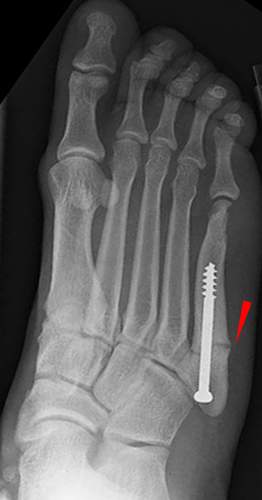
Bone stimulation, most commonly used for Jones fractures, may be used as part of the treatment or following an inadequate response to immobilization. A pain-free external device is used to speed the healing of some fractures. Crutches may also be needed to avoid placing weight on the injured foot. Depending on the severity of the injury, the foot is kept immobile with a cast, cast boot, or stiff-soled shoe. The foot and ankle surgeon may use one of these non-surgical options for treatment of a fifth metatarsal fracture:

Examples include mid-shaft fractures, which usually result from trauma or twisting, and fractures of the metatarsal head and neck.Īvulsion and Jones fractures have the same signs and symptoms. Other types of fractures can occur in the fifth metatarsal. They are less common and more difficult to treat than avulsion fractures. Jones fractures are caused by overuse, repetitive stress, or trauma. A Jones fracture can be either a stress fracture (a tiny hairline break that occurs over time) or an acute (sudden) break. Jones fractures occur in a small area of the fifth metatarsal that receives less blood and is therefore more prone to difficulties in healing.

Avulsion fractures are often overlooked when they occur with an ankle sprain. This type of fracture is the result of an injury in which the ankle rolls.

In an avulsion fracture, a small piece of bone is pulled off the main portion of the bone by a tendon or ligament. Two types of fractures that often occur in the fifth metatarsal are: Fractures (breaks) are common in the fifth metatarsal – the long bone on the outside of the foot that connects to the little toe.


 0 kommentar(er)
0 kommentar(er)
